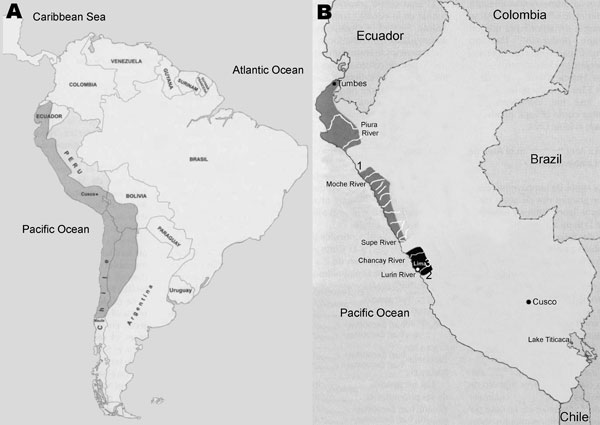Volume 17, Number 5—May 2011
Historical Review
Evidence of Tungiasis in Pre-Hispanic America
Figure 1

Figure 1. A) Geopolitical map of the Incan Empire at the time of its greatest expansion (dark gray shading). B) Geographic location of the Chimu (dark gray shading) and Maranga (black shading) cultures in modern Peru. The numbers indicate the sites at which pre-Incan anthropomorphic potteries depicting tungiasis were located: 1, Chicama Valley; 2, Pachacamac Valley; 3, Surquillo.
Page created: August 08, 2011
Page updated: August 08, 2011
Page reviewed: August 08, 2011
The conclusions, findings, and opinions expressed by authors contributing to this journal do not necessarily reflect the official position of the U.S. Department of Health and Human Services, the Public Health Service, the Centers for Disease Control and Prevention, or the authors' affiliated institutions. Use of trade names is for identification only and does not imply endorsement by any of the groups named above.